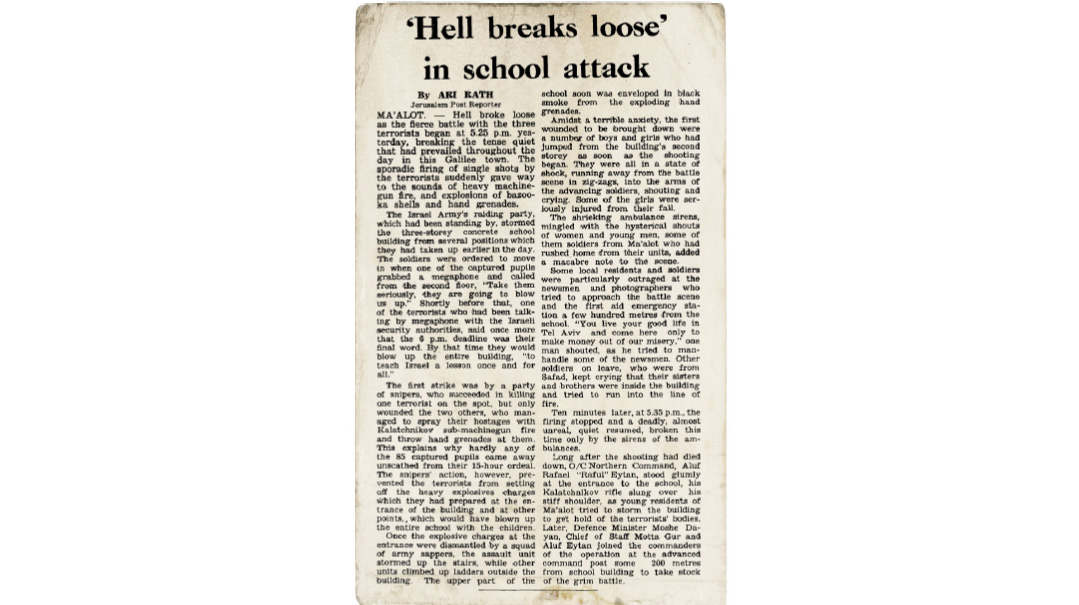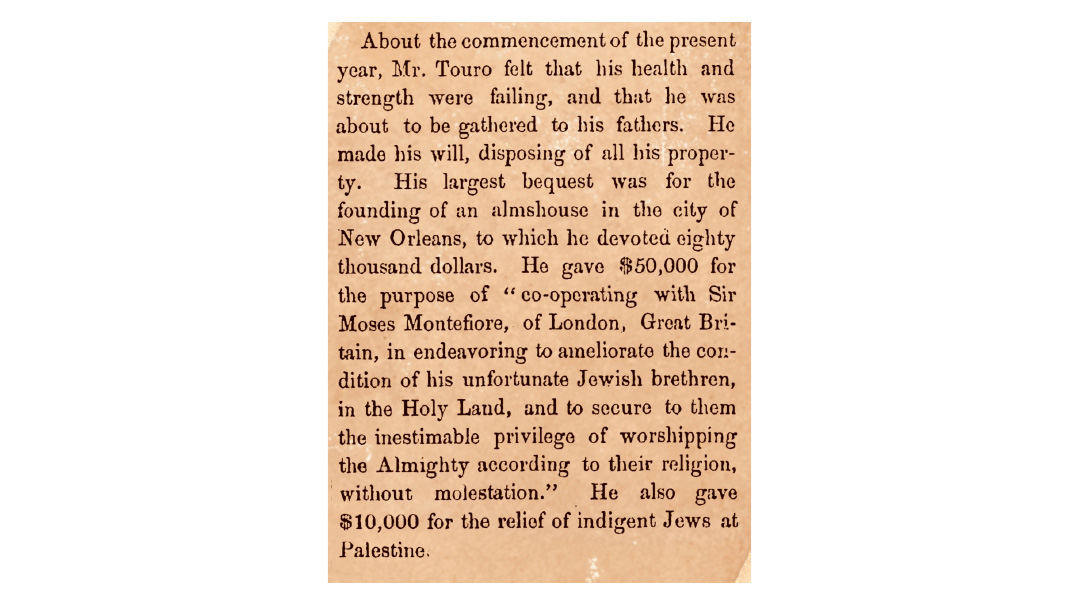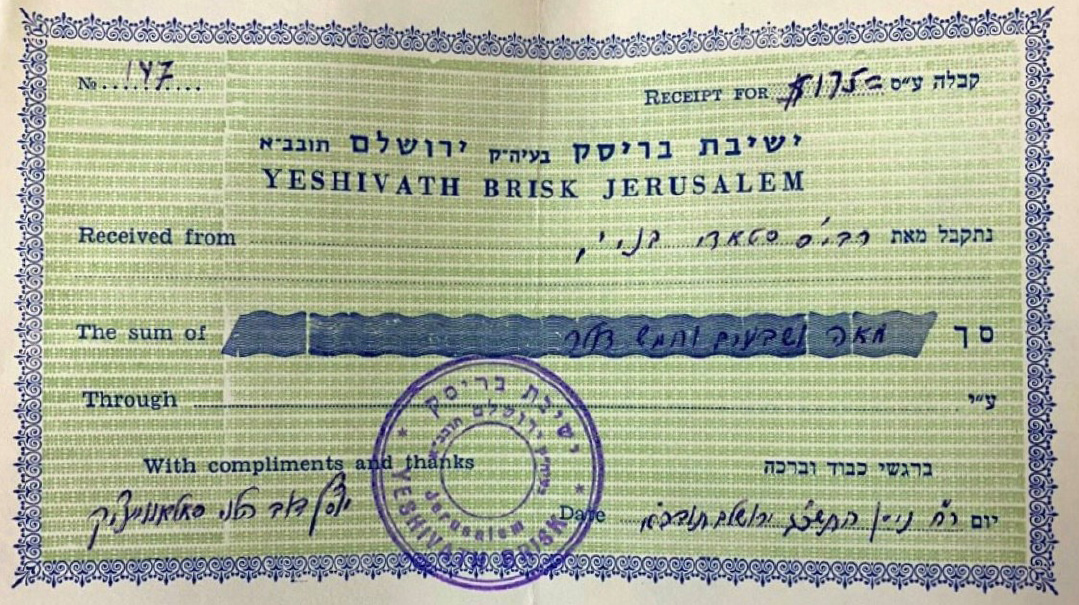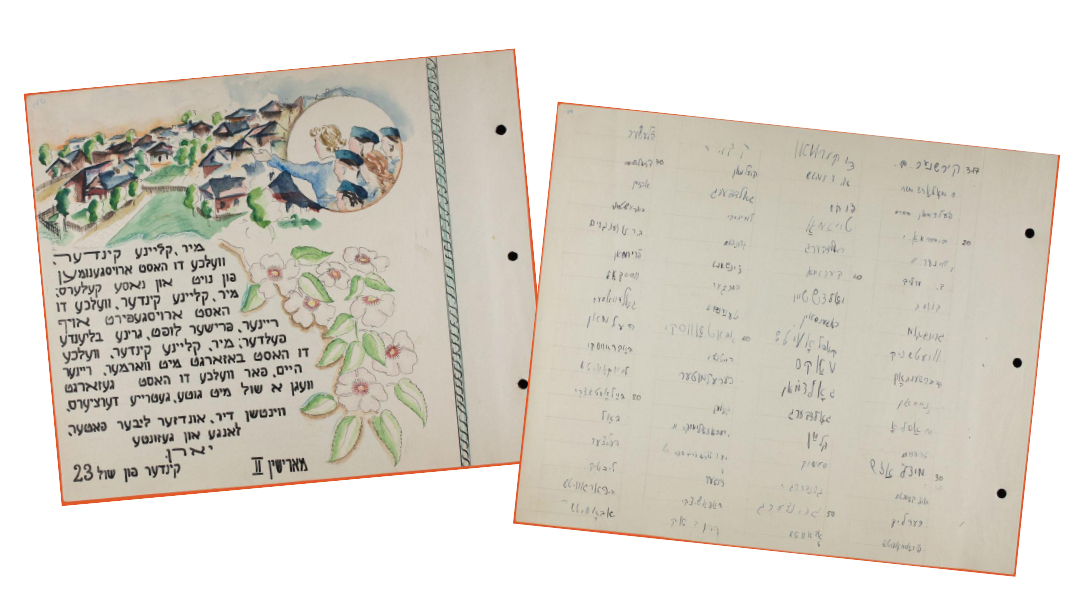Martyrs of Maalot
| May 28, 202422 young teenagers from Tzfas who were martyred al Kiddush Hashem in one of the worst massacres in Israeli history, exactly 50 years ago

Title: Martyrs of Maalot
Location: Maalot, Israel
Document: Jerusalem Post
Time: May 1974
Visitors to the mystical Old City of Tzfas often make their way down the mountain toward the city’s legendary ancient cemetery. As the sun hangs over Meron in the distance, petitioners visit the burial sites of the Boyaner Rebbe of Leipzig, the Ridvaz, the Bas Ayin, the Be’er Mayim Chaim, the mysterious Rav Leib Baal Yissurim, and the great kabbalists of 16th-century Tzfas — the Arizal, the Beis Yosef, Rav Shlomo Alkabetz, the Mabit, Rav Moshe Cordovero, Rav Moshe Alshich, and so many others.
Generally overlooked in those hallowed grounds are the graves of 22 young teenagers from Tzfas who were martyred al Kiddush Hashem in one of the worst massacres in Israeli history, exactly 50 years ago. That was the Maalot massacre of May 15, 1974.
On Sunday night, May 12, three Palestinian terrorists affiliated with the Democratic Front for the Liberation of Palestine (DFLP) infiltrated Israel’s northern border fence from Lebanon. They slipped in undetected, and although Israeli border patrols discovered the break the next day and an alert was sounded to all security forces in the area, the terrorists were still at large for the next two days.
At about 11 p.m. Tuesday night, they ambushed a car driven by an Israeli Druze who was transporting Israeli-Arab Christian workers back to their village, opening fire on the vehicle, killing one woman and injuring several others. The injured driver managed to continue driving and reported the incident to the police and IDF, who searched the area to no avail. The terrorists continued on the road, entering Maalot later that night.
At about 3:30 a.m. the terrorists knocked on the door of the Cohen family. Upon entry, they murdered Yosef Cohen and his pregnant wife Fortuna and their four-year-old Moshe. The terrorists then headed toward the Netiv Meir school.
On Tuesday morning, a group of Tzfas religious high school students had begun a three-day school trip. The 102 students were grades nine to eleven, between the ages of 14 and 16. They were accompanied by ten teachers, and the trip was authorized despite the security alert regarding the terrorists in the region. That night they were sleeping on the premises of the Netiv Meir school in Maalot. In the early morning hours of Wednesday, the terrorists entered the school building, rounded up the students and teachers, and held them hostage in one of the classrooms. Some students and teachers managed to escape through windows.
The DFLP terrorists demanded that 26 security prisoners held by Israel be released by 6 p.m. that day or they would murder all the hostages. Israeli military units surrounded the school early in the morning, and snipers took positions in nearby buildings. Defense Minister Moshe Dayan arrived at the scene at 7 a.m., and gave contingency orders to the elite commando unit Sayeret Matkal to prepare to storm the building. Gunfire was exchanged, and one Israeli soldier was killed in the process. Prime Minister Golda Meir’s cabinet voted to accept the terrorist’s ultimatum at 11:45 a.m., but at 4:15 p.m. the government authorized Dayan and Chief of Staff Motta Gur to implement the military operation.
At 5:25 — less than an hour before time ran out on the terrorist ultimatum — Sayeret Matkal stormed the building. A series of unfortunate occurrences led to the terrorists opening fire on the defenseless students. One of the snipers missed a terrorist, and another terrorist positioned himself atop a stairwell, firing below toward the school entrance. A soldier threw a smoke grenade in order to create a smokescreen, but it blocked the vision of their comrades entering the other side of the building. Some of the soldiers ran up two flights of stairs to rescue the children, not realizing that the hostages were on the first floor.
In the meantime, the terrorists reacted to the breakthrough by spraying machine gun fire and lobbing grenades at the students. Many jumped from the windows, and a few seconds later the Sayeret Matkal fighters entered the room and eliminated the three terrorists. At the end of the bloodbath, 22 students lay dead and another 68 were wounded.
In 1975, after the country had emerged from mourning the terrible tragedy, a light was kindled in the darkness with the establishment of a Hesder yeshivah in Maalot. Spiritual revival was viewed as the most appropriate response, and the yeshivah was named Yeshivat Maalot Yaakov after Yaakov Herzog, the legendary Israeli diplomat who was himself a bonified Torah scholar.
In its early years, Rav Shmuel Dickman served as the rosh yeshivah. A graduate of both Ponevezh and Chevron, he was married to Yocheved Ezrachi, sister of Rav Boruch Mordechai and ybdlch”t Rav Yitzchak Ezrachi. The yeshivah subsequently opened five additional branches across the country, and in Maalot there are 300 talmidim in the yeshivah and accompanying kollel. The current rosh yeshivah of Maalot Yaakov is Rav Yehoshua Weitzman, a musmach of Keren B’Yavneh and Machon Harry Fischel and the author of countless seforim.
Soviet Jewry for Maalot
Two days after the Maalot massacre, Alexander Luntz and Anatoly Sharansky organized a demonstration in front of the Lebanese embassy in Moscow. Nearly 50 Jews put themselves at considerable risk by participating in this demonstration, as they publicly condemned the murderers and their Soviet benefactors, and called for support of Jews in Israel. The KGB was taken by surprise by this courageous behavior, which was a rarity in the Soviet Union. The arrests of 27 Soviet Jews by the KGB took place after about 15 minutes. In Kiev, a group of Jews asked to place a wreath of flowers in memory of the Maalot victims at the Babi Yar memorial to the city’s Jews murdered in the Holocaust. Their request was denied.
Beefing up Security
The memory of the Maalot massacre shadows all security operations since that time. The IDF established a special hostage rescue unit, as did the Israeli Police. These units were activated during later hostage crises, which ended with minimal losses of life. This was particularly noted during the raid on Entebbe two years later. At the same time, the security forces established Mishmar Ezrachi, to train and engage private citizens in providing defense of civilians. The northern border was strengthened in order to prevent future infiltrations. The Ministry of Education promulgated new security requirements for schools, including daily security at all schools, and special requirements for school trips. These rules are still in effect at all Israeli educational institutions to this day.
Erev Shabbos 23 Iyar marks the 50th yahrtzeit of the martyrs of Maalot.
(Originally featured in Mishpacha, Issue 1013)
Oops! We could not locate your form.






